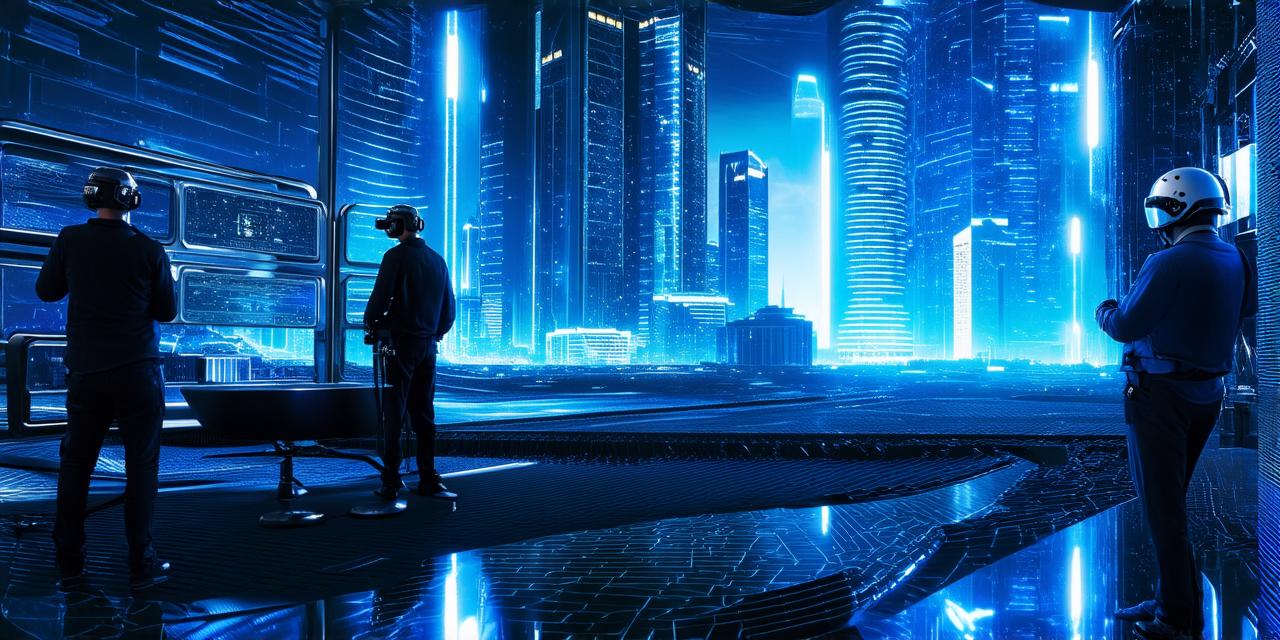Introduction
Virtual reality (VR) technology has come a long way since its inception in the mid-20th century. From simple head-mounted displays to sophisticated omnidirectional systems, VR has captured the imagination of people across the globe, promising an immersive experience that transcends the limitations of the physical world. However, despite significant advancements in hardware and software, full-dive virtual reality – a technology that allows users to completely immerse themselves in a simulated environment – remains elusive.
This article aims to explore the current state of full-dive VR technology, delving into the various challenges and opportunities that lie ahead. By examining case studies, personal experiences, and expert opinions, we will analyze the progress made so far and assess the prospects for the future. Additionally, we will provide a comprehensive overview of the key factors that are driving the development of full-dive VR, including advances in neuroscience, computer vision, and robotics. Finally, we will offer a prognosis on when we can expect to see widespread adoption of full-dive VR technology, drawing on insights from industry leaders and thought experts.
The Challenges of Full-Dive VR: A Technical Perspective
Full-dive VR technology is characterized by its ability to create a completely immersive experience for the user, simulating the sensation of being in another world. To achieve this level of realism, several technical challenges must be addressed.
One of the primary obstacles facing full-dive VR developers is the issue of motion sickness. The disconnect between the user’s physical movements and the simulated environment can lead to nausea, dizziness, and other adverse effects. To mitigate these symptoms, developers must employ advanced tracking systems that accurately capture the user’s movements and translate them into the virtual world in real-time. Additionally, specialized hardware such as haptic vests and gloves can provide tactile feedback, further enhancing the sense of immersion and reducing the risk of motion sickness.
Another major challenge facing full-dive VR technology is the issue of visual fidelity. To create a truly convincing simulation, developers must ensure that the virtual environment is rendered with the highest possible resolution and detail. This requires significant computational power, which may limit the practicality of full-dive VR for certain applications. However, recent advances in machine learning and artificial intelligence have enabled researchers to develop more efficient algorithms for rendering complex visual data, paving the way for higher-fidelity simulations.
Finally, full-dive VR technology must address the issue of interaction with virtual objects. Users must be able to manipulate and engage with simulated items in a manner that feels natural and intuitive. To achieve this, developers must incorporate advanced computer vision and robotics techniques, enabling users to interact with virtual objects using hand gestures, body movements, and other forms of input.
Case Studies: A Window into the Future of Full-Dive VR
While the challenges facing full-dive VR technology are formidable, several companies and organizations are already making strides in this area. By examining these case studies, we can gain valuable insights into the potential applications and limitations of full-dive VR technology.
One notable example is the work being done by Oculus, a leading developer of VR hardware and software. In 2018, the company unveiled its “Oculus Quest 2” headset, which promises to deliver a wireless, standalone VR experience with a resolution of 1832 x 1920 pixels per eye – significantly higher than previous generations of VR hardware. Additionally, Oculus has developed a range of software tools and libraries designed to facilitate the creation of immersive, interactive experiences for full-dive VR.
Another pioneering company in this space is Neuralink, a neurotechnology startup founded by Elon Musk. The company’s flagship product, the “Neuralink implant,” aims to enable direct communication between the human brain and computers, potentially opening up new possibilities for full-dive VR
